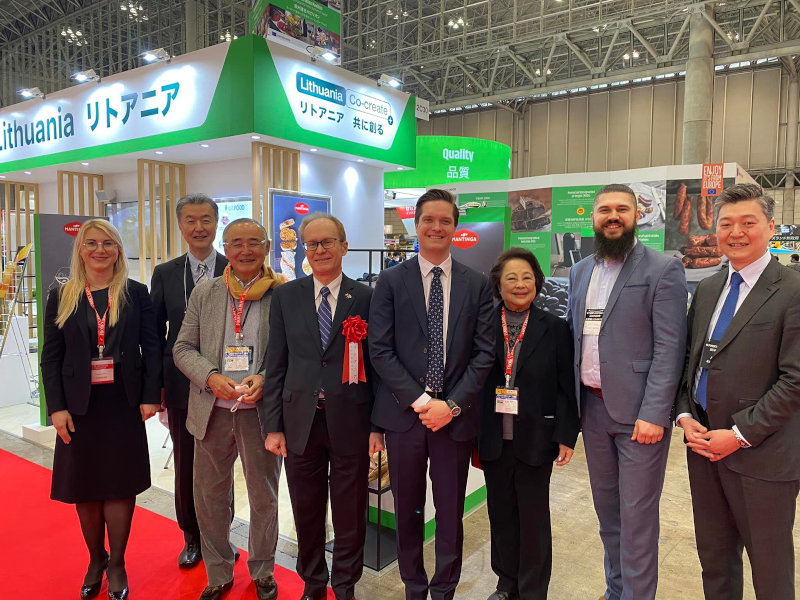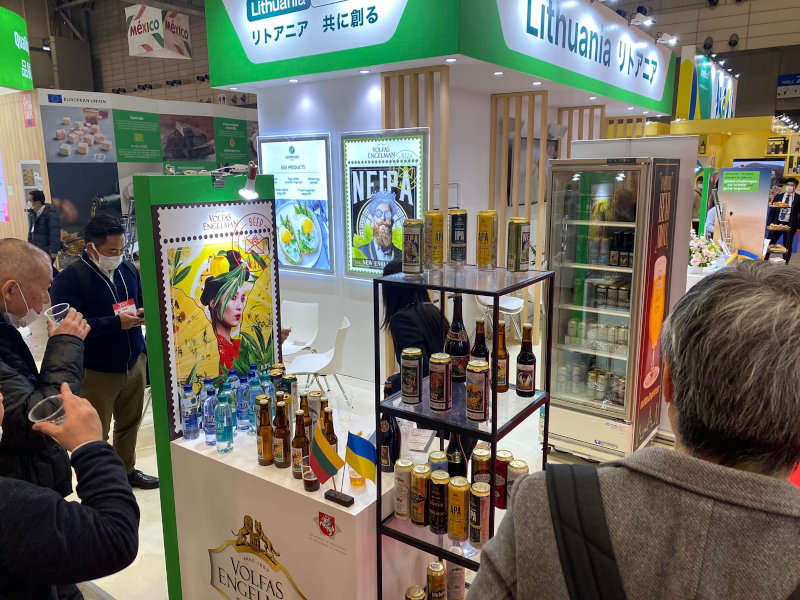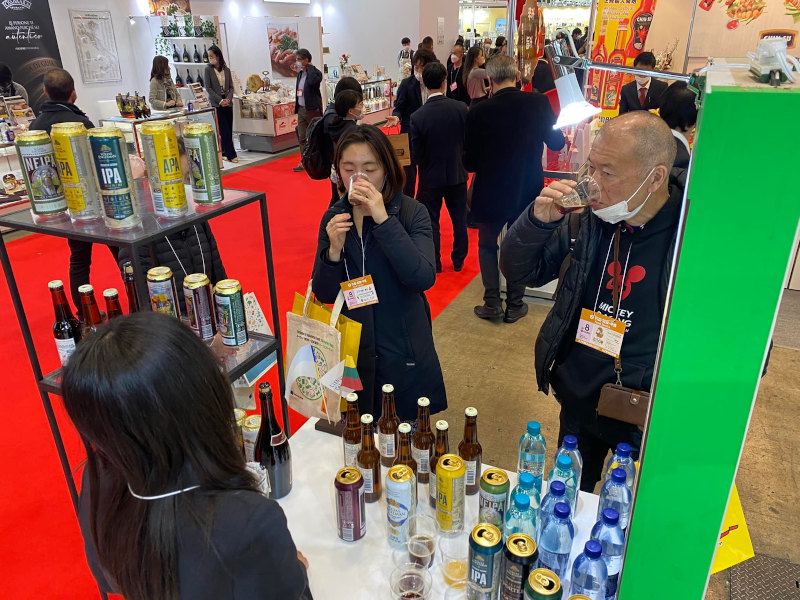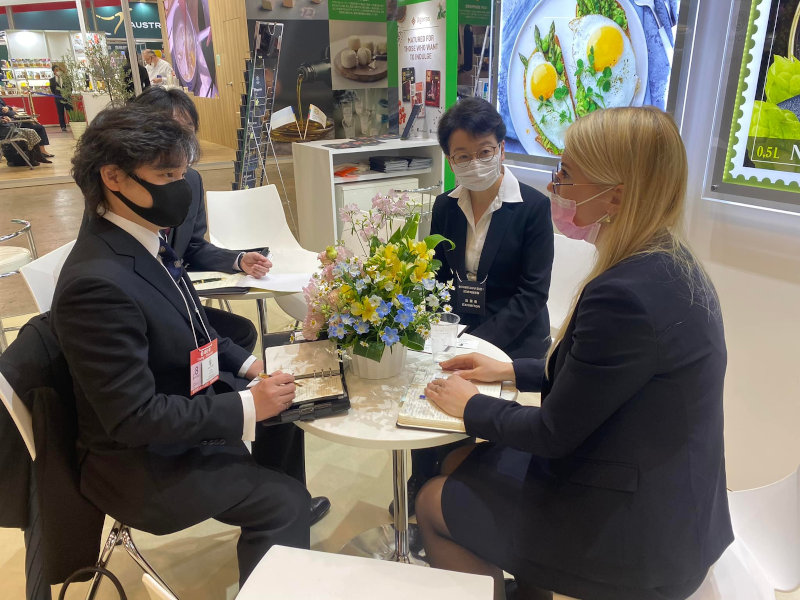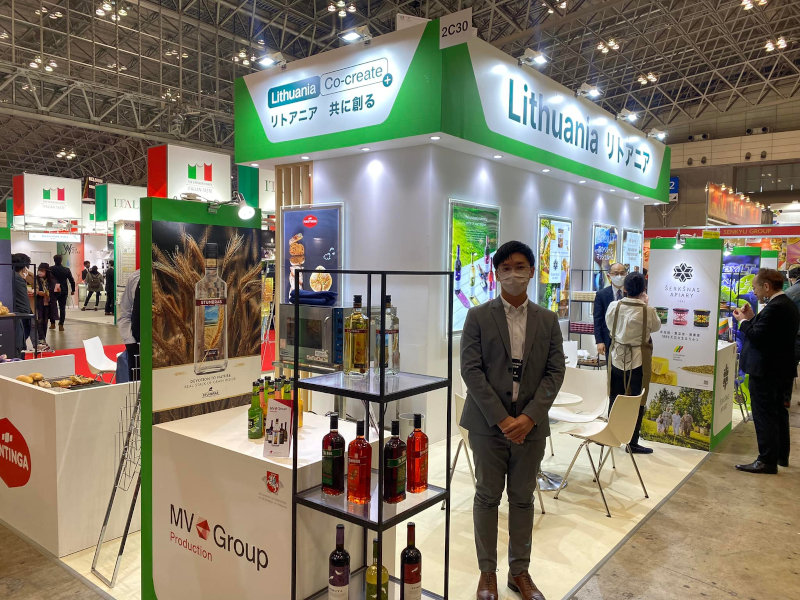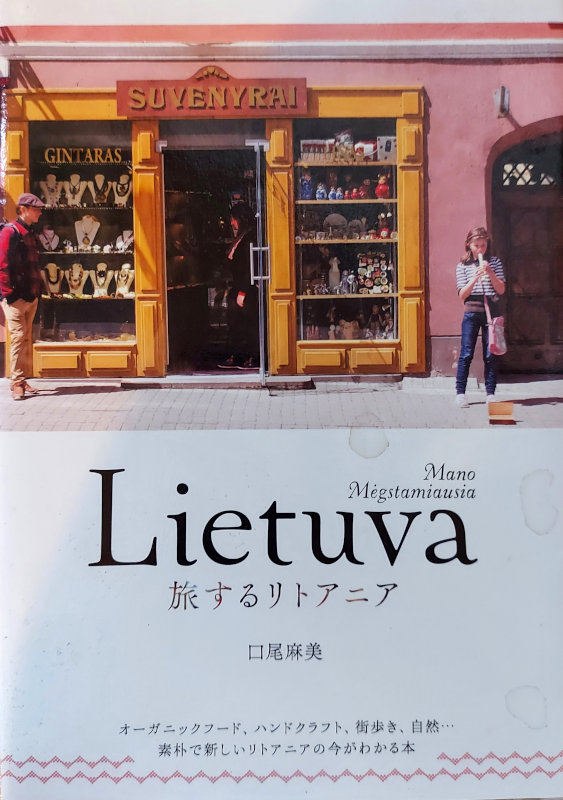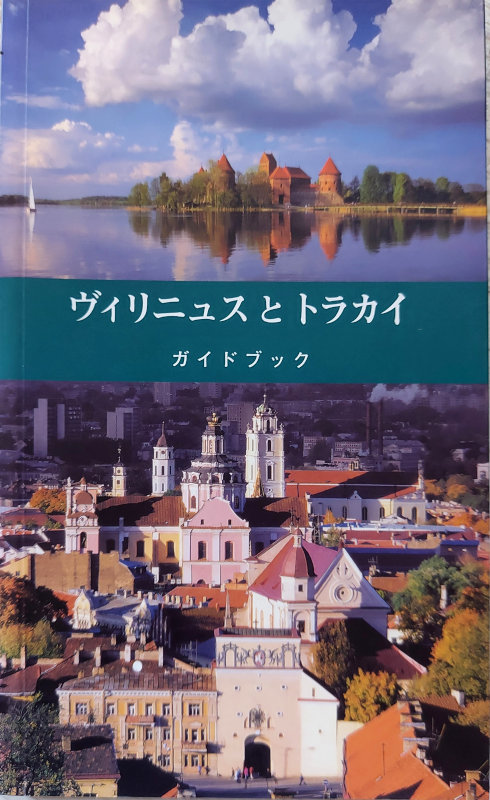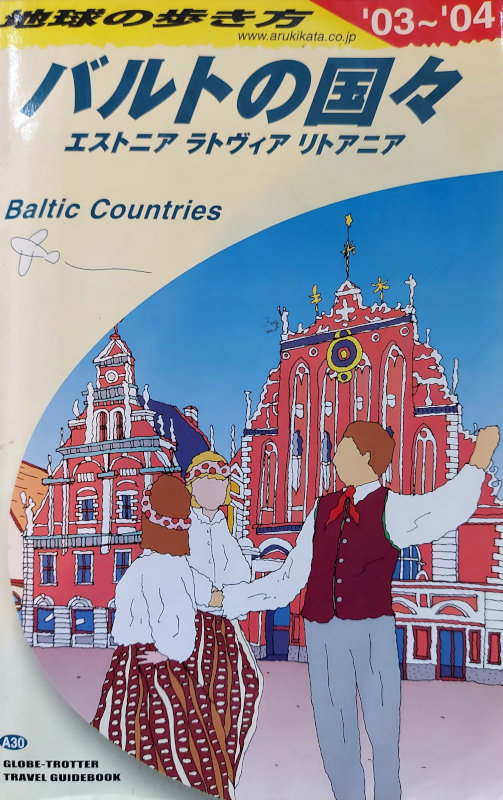Economic Relationships
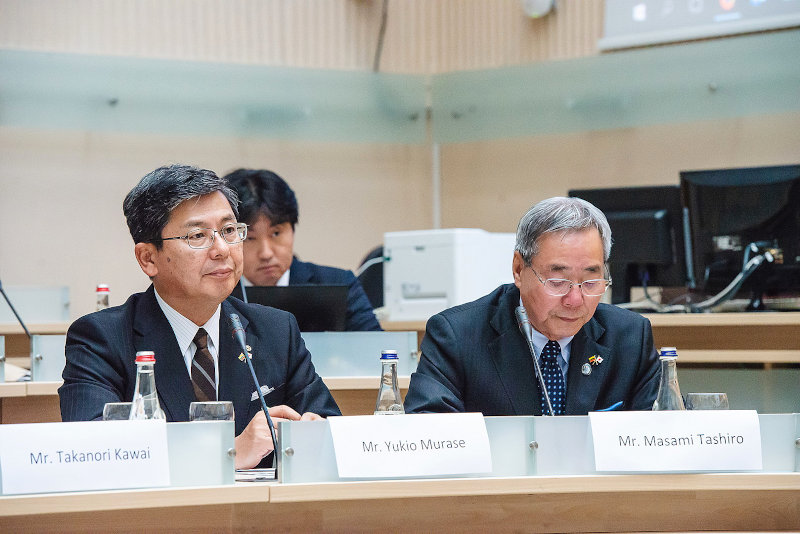
(delegation of business representatives from Gifu in Kaunas, 2019; Kaunas City Municipality archive)
Despite the long-term friendship between Lithuania and Japan, the two countries struggled to develop close economic relationships before the Second World War and during the first decade after the restoration of independence in 1990. Since Lithuania had been off the world map for a long time, it was largely unknown to Japanese entrepreneurs. The situation changed after Lithuania joined the European Union. In 2004, the delegation of Keidanren led by Hajime Sasaki, Chairman of computer company NEC, visited Lithuania. The same year, the representatives of the Lithuanian Confederation of Industrialists visited Japan as well. Later both countries sent delegations of entrepreneurs on national and regional levels.
For Lithuania, Japan has been one of the most significant strategic economic partners in Asia in the last decade. Trade is developing, and the most dominant activity has been the growing export from Lithuania since 2012. Until the COVID-19 pandemic in 2019, the tourism industry also experienced a dramatic expansion. However, it must be acknowledged that there is still much space for development in the field of direct investment.
The governments of both sides are working on improving the legal basis and encouraging economic relations. For instance, the procedure for the avoidance of double taxation was established in 2018 while bilateral economic ties are also encouraged by the European Union policies, such as the Economic Partnership Agreement that entered into force in 2019.
Trade
Although Lithuania's production capacity is significantly lower than Japan's, the trade balance since 2012 has been dominated by exports from Lithuania. Looking at the data for 2020, Lithuania imported 77.7 million USD from Japan, while exports amounted to 93.53 million USD. In such volumes, Japan was the 37th largest export market for Lithuania (0.3% of Lithuanian exports) and the 34th largest import market (0.2% of Lithuanian imports).
The conditions for bilateral economic cooperation have further improved since the entry into force of the EU-Japan Free Trade Agreement in 2019. Trade is expected to intensify further from 2022 when Lithuania appoints a commerce attaché in Japan.
Exports mainly consist of tobacco, food, lasers, clothing, furniture, textiles, while imports consist of household appliances, plastic and rubber products, chemicals, etc.
(Lithuania in Foodex 2022 in Tokyo; Kristina Mineikienė)
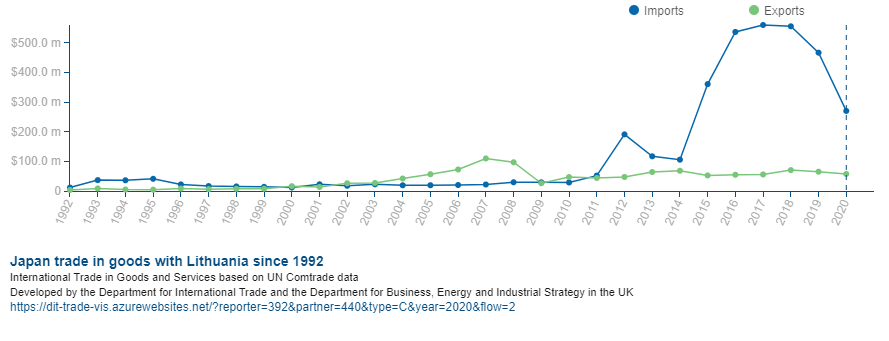
Lithuanian entrepreneurs participate actively in international fairs and export programs in Japan, for example, EU Gateway to Japan. It is an opportunity to represent Lithuanian production for Japanese market.
For this program funded by the European Union, several Lithuanian enterprises which offer attractive products for the Japanese market and develop clear strategy are chosen. In 2005, Lithuanian clothing designers had an opportunity to participate in this program and introduce their products in Japan. Since then Lithuanian manufacturers from food, furniture, and other industries presented their goods in Japan.

(delegation of business representatives from Lithuania in Tokyo, 2005; Azija LT archive)
Agriculture is an important area in Japan-Lithuania trade, especially reflected in the earliest export statistics from Lithuania to Japan. From 1994 to 2002 the main export goods to Japan were agricultural products, especially dairy ones.
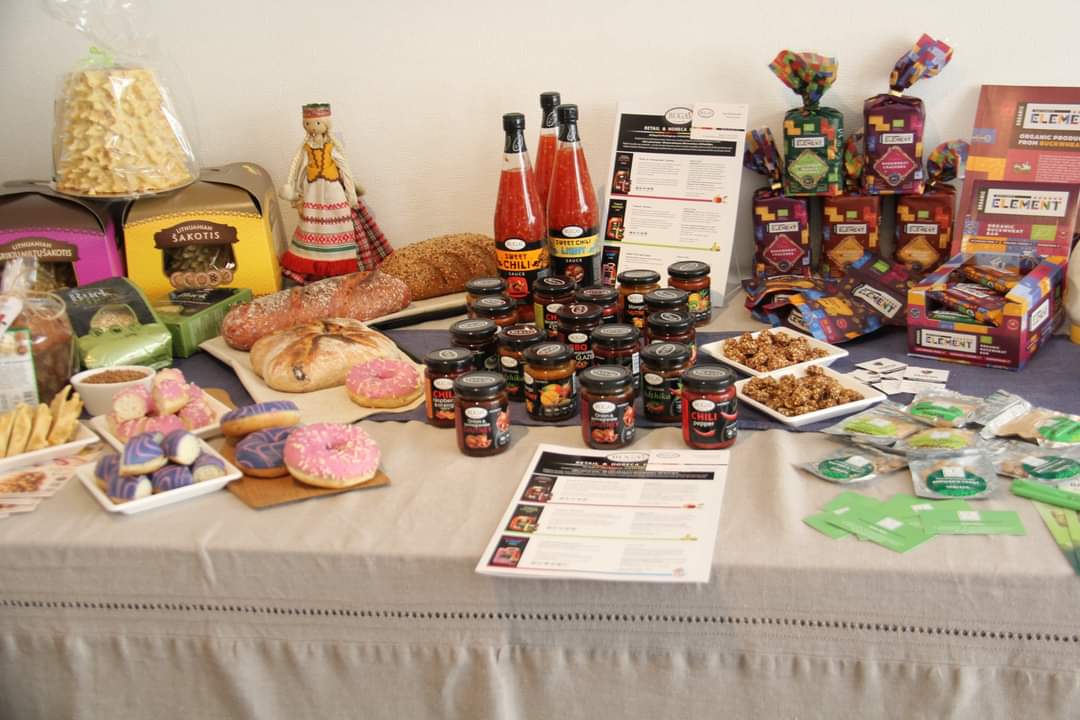
Years 2012-2014 are marked by an increase in exports of agricultural goods. Although in 2014 dairy products dominated the export market with a net worth of 11.6 millions USD, it was the last time when agricultural items were on top of export statistics. As the spectrum of Lithuanian production widened, the dairy products were overshadowed by other industries, like articles of wood, clothing, furniture, and others. On the other hand, exports of agricultural products from Lithuania are slowed down by relatively strict animal, plant disease, and food safety requirements that are applied to agricultural products imported into Japan.
Due to the increased trade volumes in 2018. the post of agricultural attaché in Japan was established. Deividas Kliučinskas was the first person to take this position.
Although locally grown and produced foodstuff were dominating the first decade, lasers were the first items to be exported to Japan after 1990. Lasers, produced in Vilnius-based company “Ekspla”, were the only export items from Lithuania to Japan in 1993.
Lithuanian lasers are highly valued globally and especially among developed countries. The statistics from 2009 show that Japan was the second-largest market of Lithuanian laser products (235 units exported) after the U.S. (355 units exported). For a couple of years (2010-2013), lasers were even dominating the Lithuanian export market to Japan.

The year 2015 marked a turning point in the export market situation because tobacco and manufactured tobacco substitutes became the No. 1 exported goods. This was directly related to the strategic business decisions by the tobacco producer “Philip Morris”. This international company closed its factory in the Netherlands in 2015 and relocated the production to the Lithuanian branch in Klaipėda city. By doing so, the Lithuanian branch expanded and started mainly exporting to Japan. This destination was previously supplied by the factory in the Netherlands.
The remarkable growth of tobacco exports caused a major jump in statistics – in 2018, exports to Japan rose by almost 136% compared to 2017, grossing 293.6 mils. USD. To compare, the rest of the top 9 export branches totaled 56.5 mils. USD in 2018.
Nevertheless, as Japan started shifting from traditional to new tobacco products, Lithuanian exports plummeted in 2019.
Investment
The Japanese investments in Lithuania is not yet a highly developed area of cooperation between countries. In 2020, the investment amounted to 1.21 mln. EUR, and according to this amount Japan is in the 104th position for Lithuania. Nevertheless, there are increasingly more Japanese investors such as “Fujitsu”, “Hitachi”, “Panasonic”, and other big enterprises interested in opportunities to contribute to significant infrastructure projects, for instance, synchronization of electrical networks or deep-water port in Klaipėda. Also, “Hitachi” considered investing in Visaginas Nuclear Power Plant.
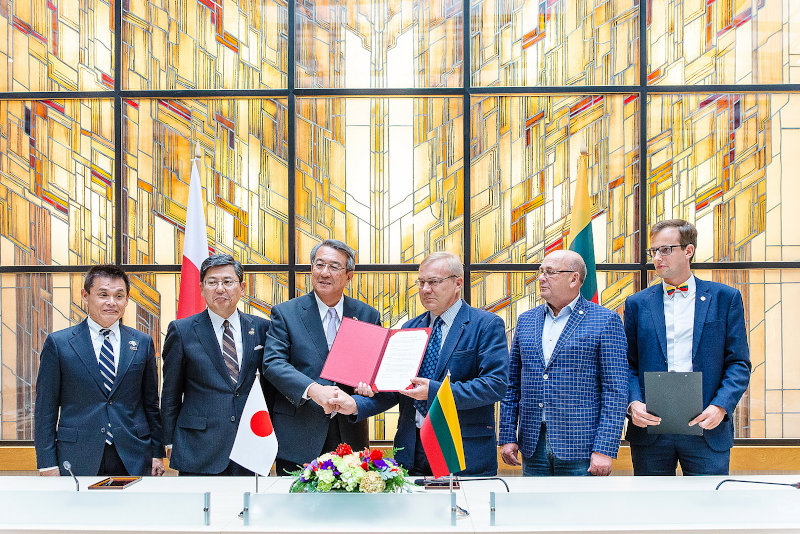
(delegation of Japanese business representatives in Kaunas, 2019; Kaunas City Municipality archive)


Tourism
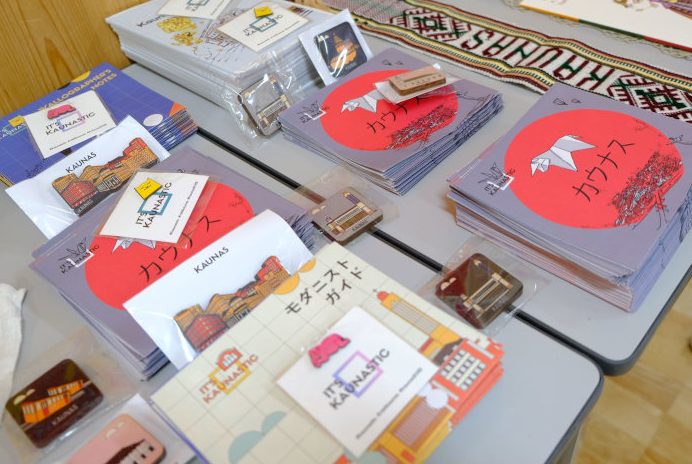
Tourism is one more area developing between countries. The number of tourists increased four times from 2008 to 2018 and exceeded 28 thousand. The number of Lithuanian tourists in Japan is smaller. In 2016, 4303 Lithuanians visited Japan. Significant changes in the tourism industry happened due to the COVID-19 pandemic. As a result, the number of Japanese tourists arriving to Japan and the amount of Lithuanians going to Japan decreased very drastically. For example, only 2066 Japanese tourists visited Lithuania in 2020 – 93% less than during 2019.
(booklets introducing Kaunas to Japanese tourists, 2019; Aurelijus Zykas)
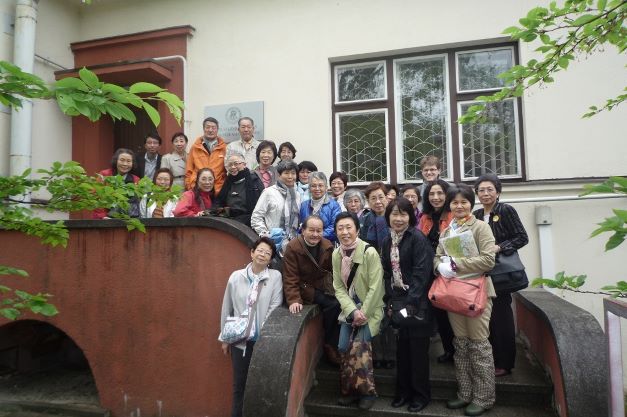
(Japanese tourists in front of Sugihara House in 2011; Azija LT archive)
Due to cultural peculiarities, Japanese tourists travel quite intensively in big groups of older people. Japanese tourists tend to choose travel packages that cover all three Baltic countries (Lithuania, Latvia, Estonia) and sometimes even a broader region, such as western part of Russia, Finland or Poland. Usually, 2-3 nights are devoted to Lithuania, and tourists have time to visit only several cities. The most important objects for sightseeing are the Old Town of Vilnius, the UNESCO World Heritage Site, Sugihara House in Kaunas, and Hill of Crosses. There is an attempt to differentiate tourist flows by attracting the youth and unemployed women or by offering new destinations (for instance, seaside or resorts, experiences in winter, etc.).
Japan was famous for being an expensive country. During the last decade, the distinction became not so obvious, and Lithuanians more often choose Japan as a touristic destination. Lithuanians travel alone or in groups. The most popular time to visit Japan is the cherry blooming season (March – April) or fall (October – November). Lithuanian groups of tourists usually spend two weeks in Japan and visit the current capital Tokyo, the old capital Kyoto and other touristic destinations such as Hiroshima, Himeji Castle, Kanazawa, Nikko, Hakone, and mountain areas.
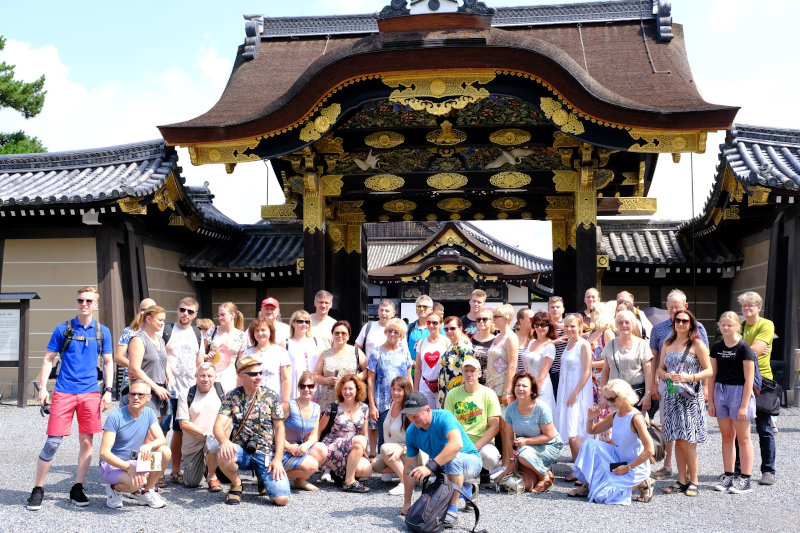
(Lithuanian tourists visiting Nijo Castle in Kyoto, 2019; Judita Židžiūnienė)
A significant factor for tourism development is information, such as publications promoting knowledge and the desire to travel. Lithuania is represented well as a tourist destination. One of the most popular books used by tourists is “Baruto sangoku” (3 Baltic countries) in the series of “Chikyu-no-Arukikata“ (Where to travel around the world), which has been published since 1996. It presents tourist destinations in Lithuania in detail and is updated regularly with new locations and descriptions. Some other books and articles in influential magazines have also introduced Lithuania in much detail during the last decade by describing various places, food culture, traditional crafts, etc.
Bibliography
- N.D. 2011. Naują atominę elektrinę ketinantys statyti japonai į Visaginą planuoja atsivežti 2 tūkstančius darbuotojų. BNS, 2011 m. spalio 01 d.
- N.D. 2018. S. Skvernelis ir Japonijos premjeras pasidžiaugė išaugusia dvišale prekyba. BNS, 2018 m. spalio 12 d.
- Jakučionis, Saulius. 2021. Landsbergis: Japonija yra svarbiausia Lietuvos partnerė Azijoje. BNS, 2021 m. liepos 3 d.
- Kauno diena. 2014. Lietuva – tarp mažiausiai Rytų Azijos ekonominį potencialą išnaudojančių šalių. kaunodiena.lt, 2014 m. liepos 31 d.
- Kutinskaitė-Būdavienė, Šarūnė. 2018. Žemės ūkio atašė: iš Kauno – į Japoniją. Diena.lt, 2018 m. kovo 4 d.
- Laurinavičienė, Beatričė. 2014. Ant slenksčio - Rytų Azija. Iliustruotas mokslas., 2014 m. gegužės 30 d.
- Lietuvos užsienio reikalų ministerija. 2021. Japonija.
- Pabiržis, Dovaidas. 2018. Lietuvos ir Japonijos ryšių plėtrai erdvės nestinga. Verslo žinios, 2018 m. sausio 12 d.

